Belize - 2019
In April-May 2019 I had a 6-week trip to Central America.
(Melbourne - Los Angeles – Mexico – Cuba – Belize – Guatemala –
Mexico City – Los Angeles - Melbourne)
After my visit to Cuba I joined my third IntrepidTravel trip from Cancun through southern Mexico, Belize and Guatemala.
From Tulum in Mexico we had a 4-hour air-conditioned coach trip to Chetumal, the last town in Mexico before the Belize border.
After a taxi ride from the bus-station to the border, we had a 4-hour ride on this "chicken-bus" to Belize City.
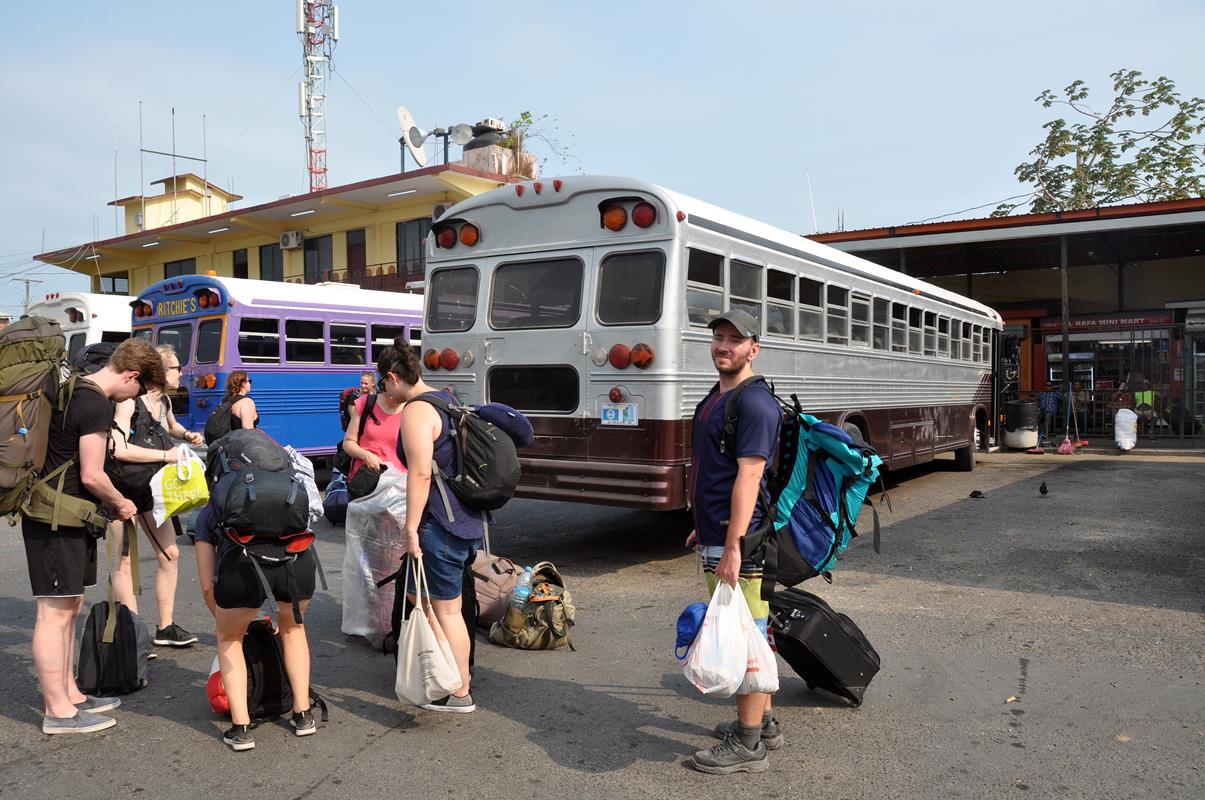
While it was not air-conditioned, the one-time American school-bus was reasonably comfortable and quite large.
A grandmother with a 3-year old girl sat next to me. The girl was fascinated with me ... she kept looking at me and patting my knee.

From Belize City we had about an hours ride on a fast, large water-taxi to Caye Caulker about 35km to the north-east.
Caye Caulker is a small limestone coral island off the coast of Belize in the Caribbean Sea
measuring about 8km (north to south) by less than 0.5km (east to west).
The main industry on the island prior to tourism was fishing.
The island sits in the middle of natural migration routes for fish, and feeding grounds for conch and lobster.
Tourism first started on the island around 1964, with only a few visitors on weekends from the mainland.
In recent years, the island has become a popular destination for backpackers and other tourists.
There are over 50 hotels and a number of restaurants and shops.
Hippies following the so-called "Gringo Trail", of Isla Mujeres, Tulum, Caye Caulker,
Tikal and Lake Atitlan in Guatemala passed through the island.
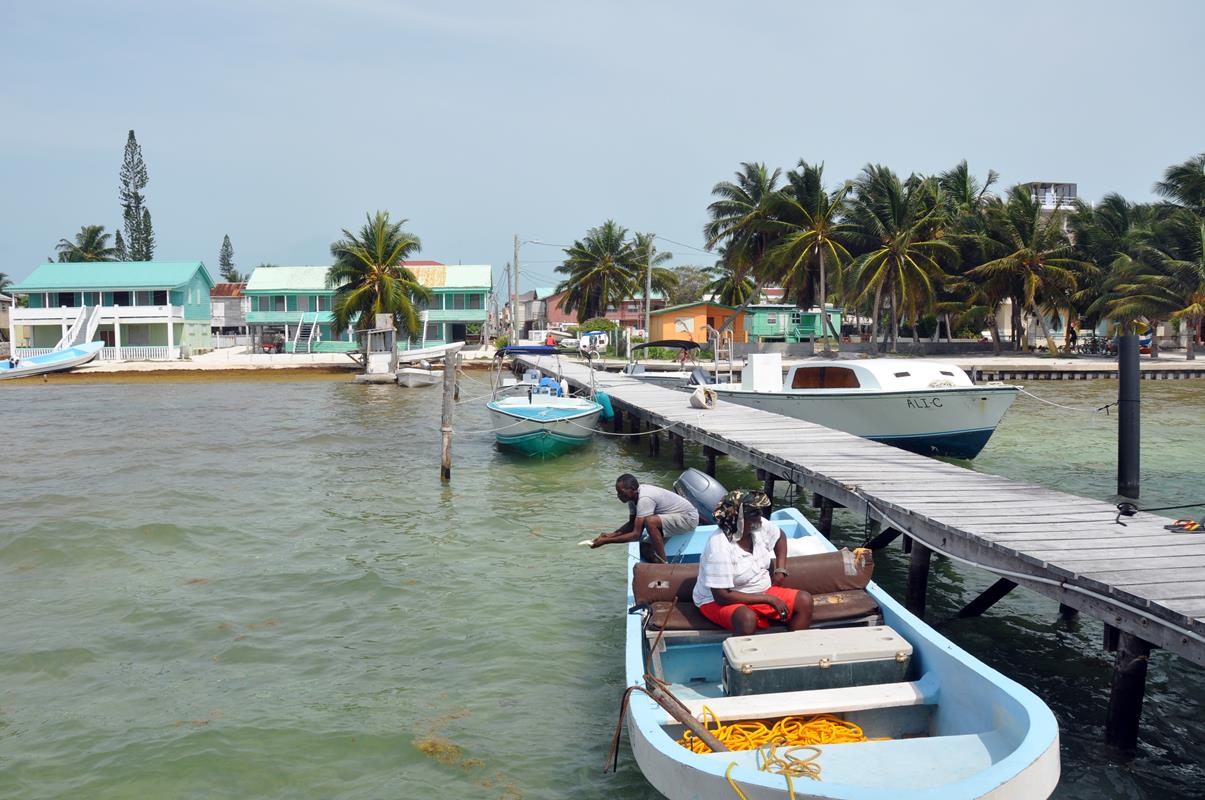
The country was formerly a British territory called British Honduras
and when it became independent in 1981, it changed its name to Belize.
Spanish was the main language in the other Central American countries, but here it was English.
You could readily shop with US dollars.
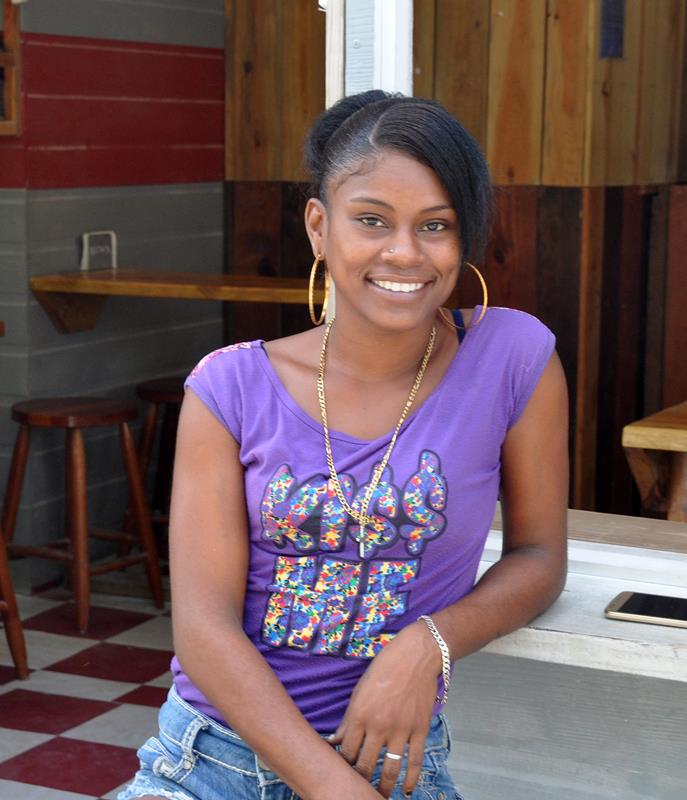
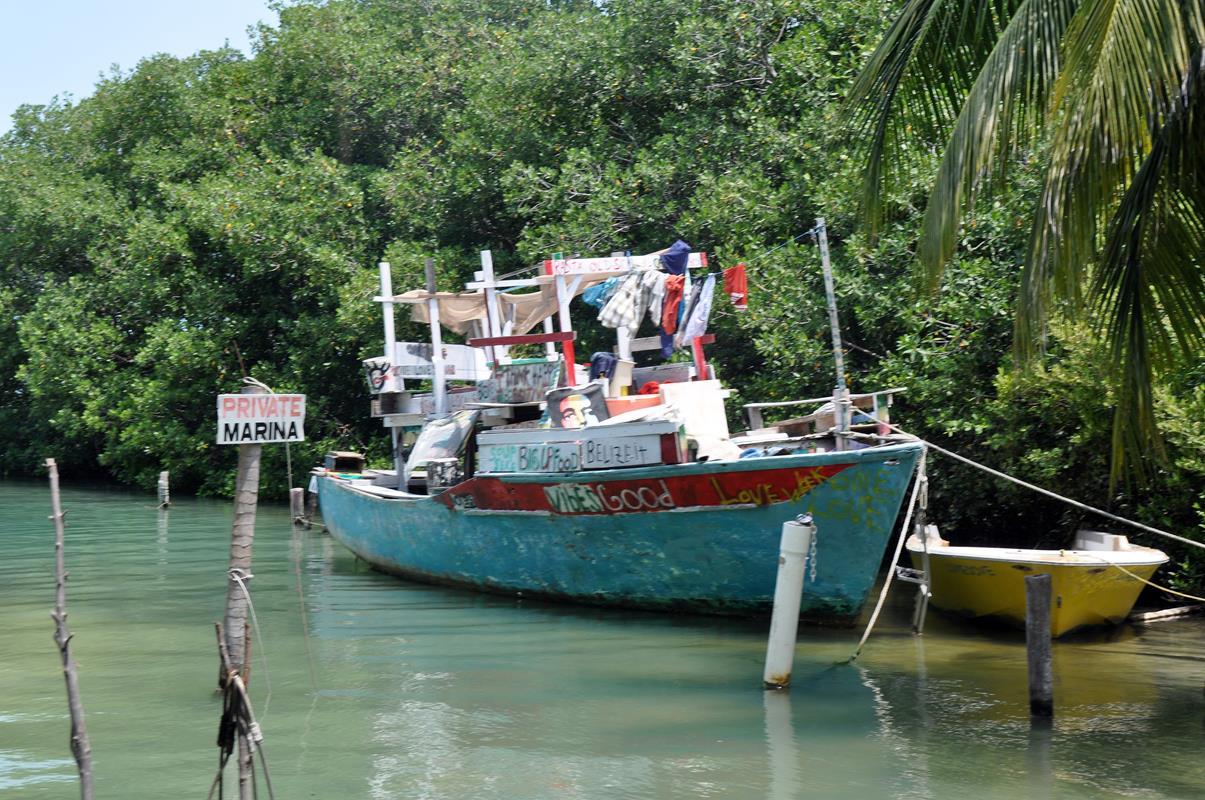


We had a day-cruise out to the reef on the catamaran "Gypsy Queen".
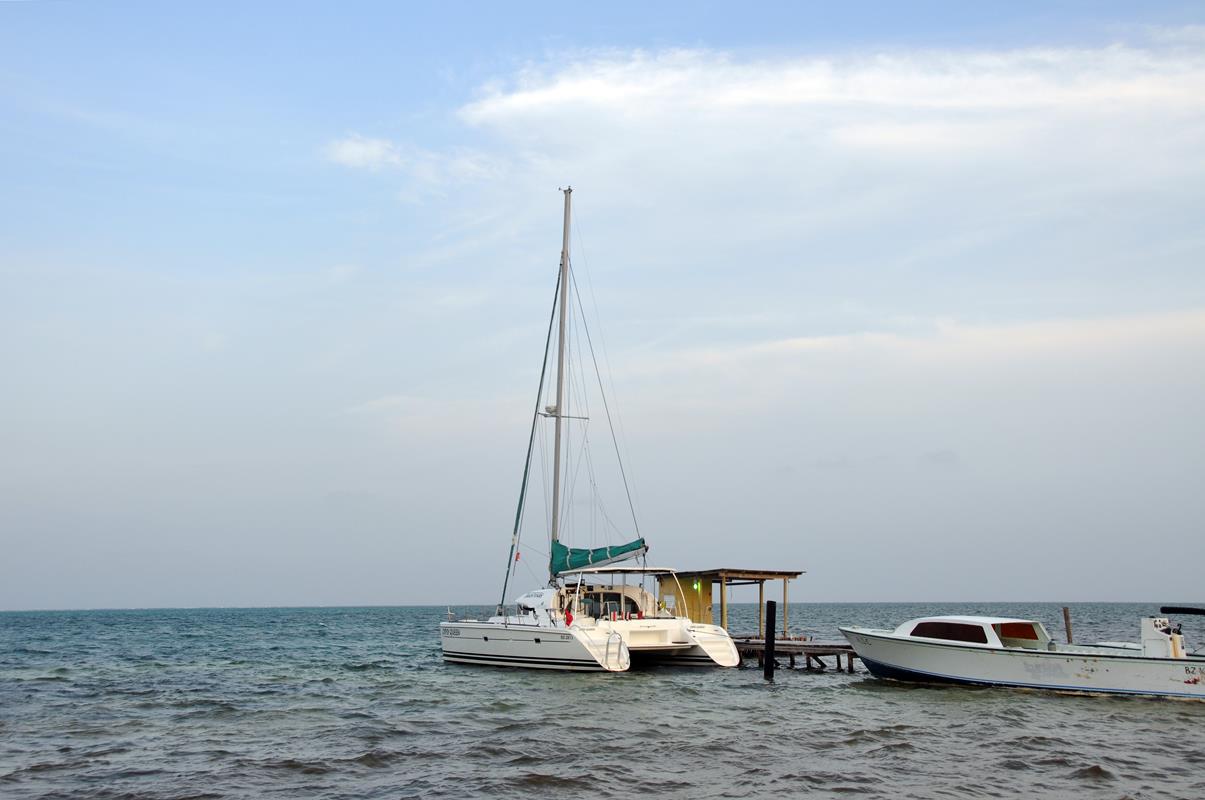
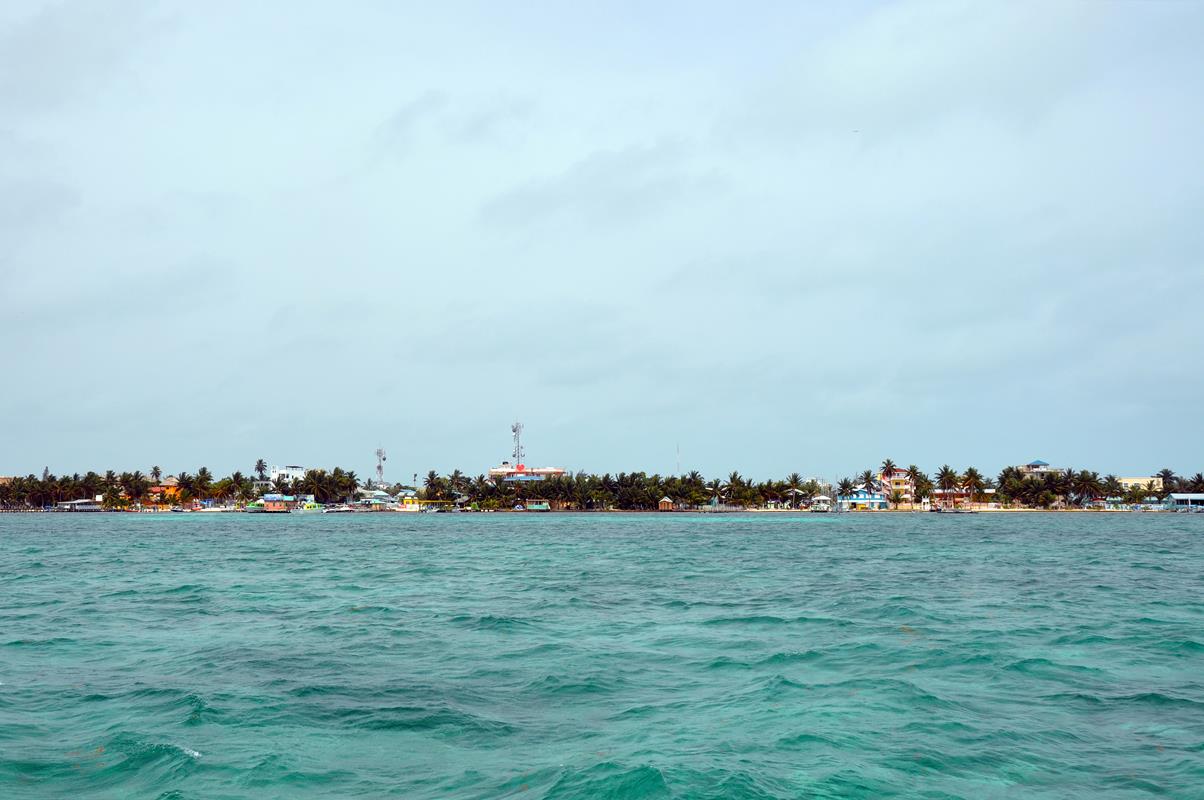
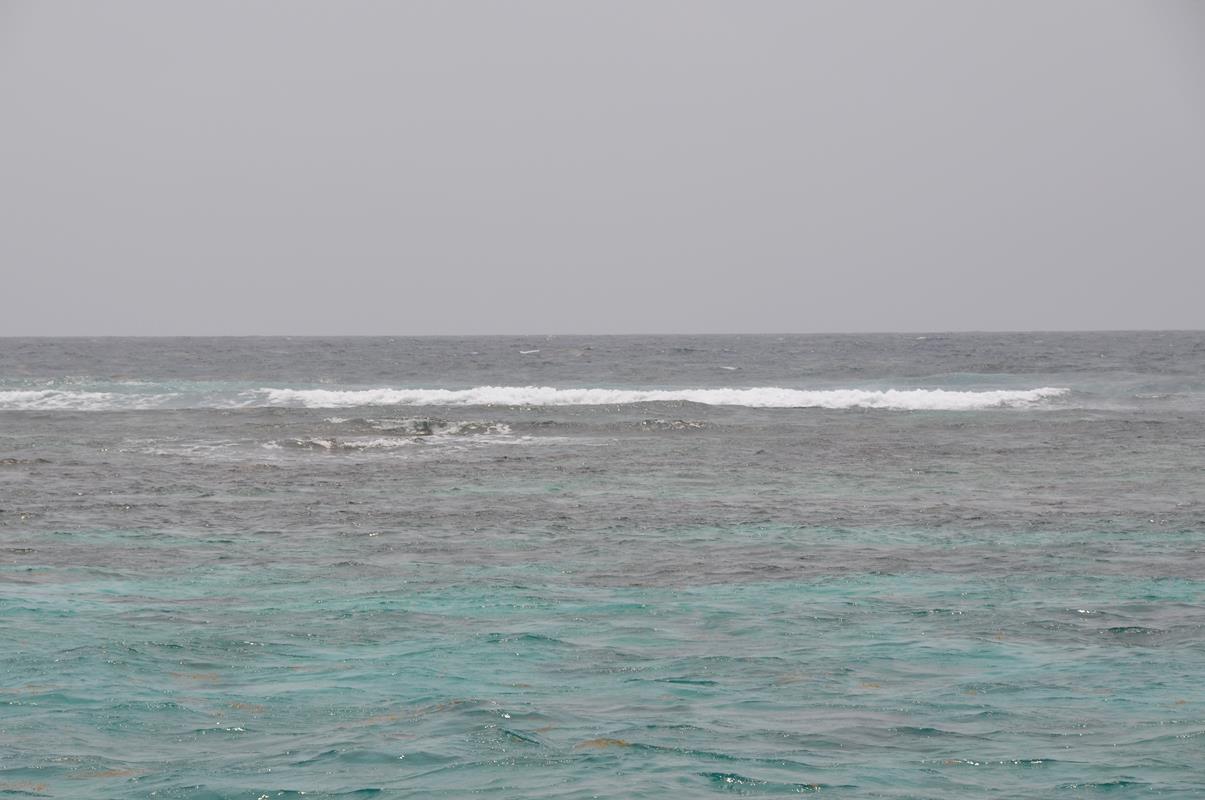

We had three 45-minute snorkelling sessions at the reef.
On the first we saw a mother manatee with a calf.
On the second there were a few small schools of fish an some coral.
On the third we swam with some "friendly" sharks that came up to the catamaran as we arrived.
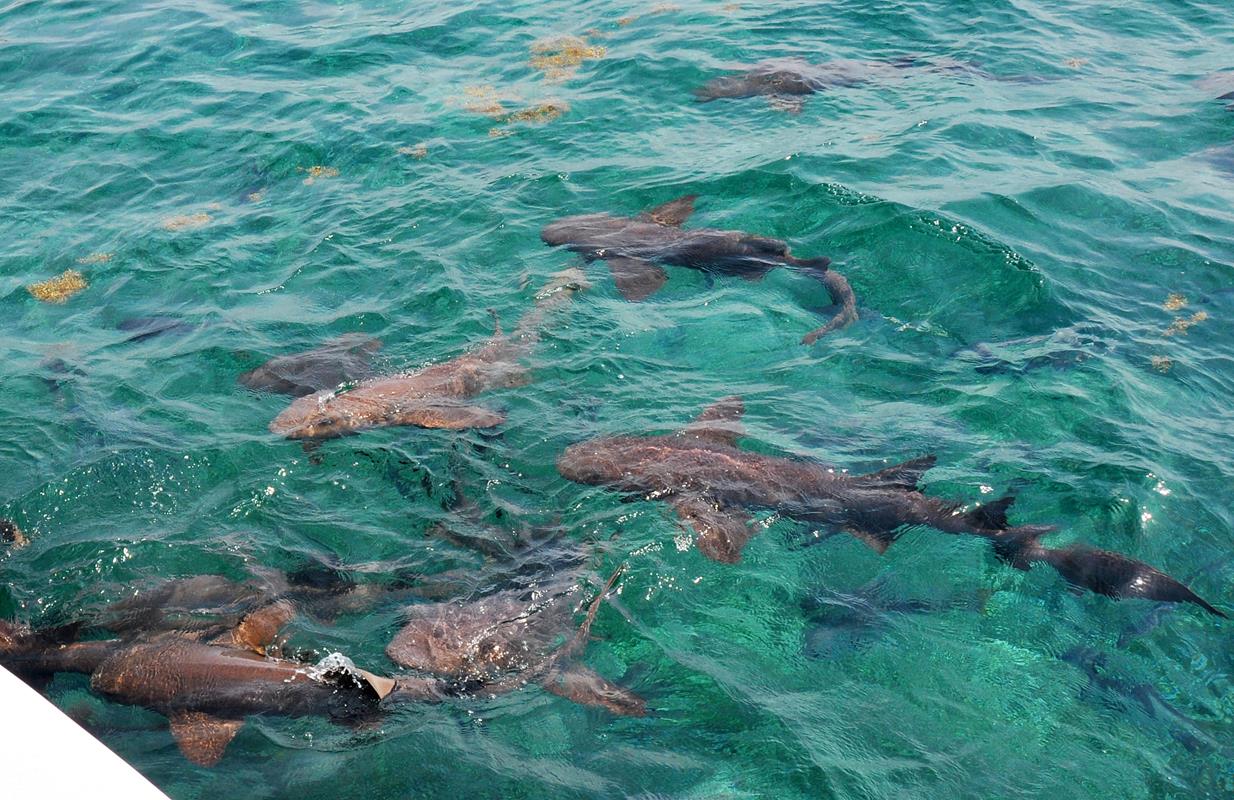
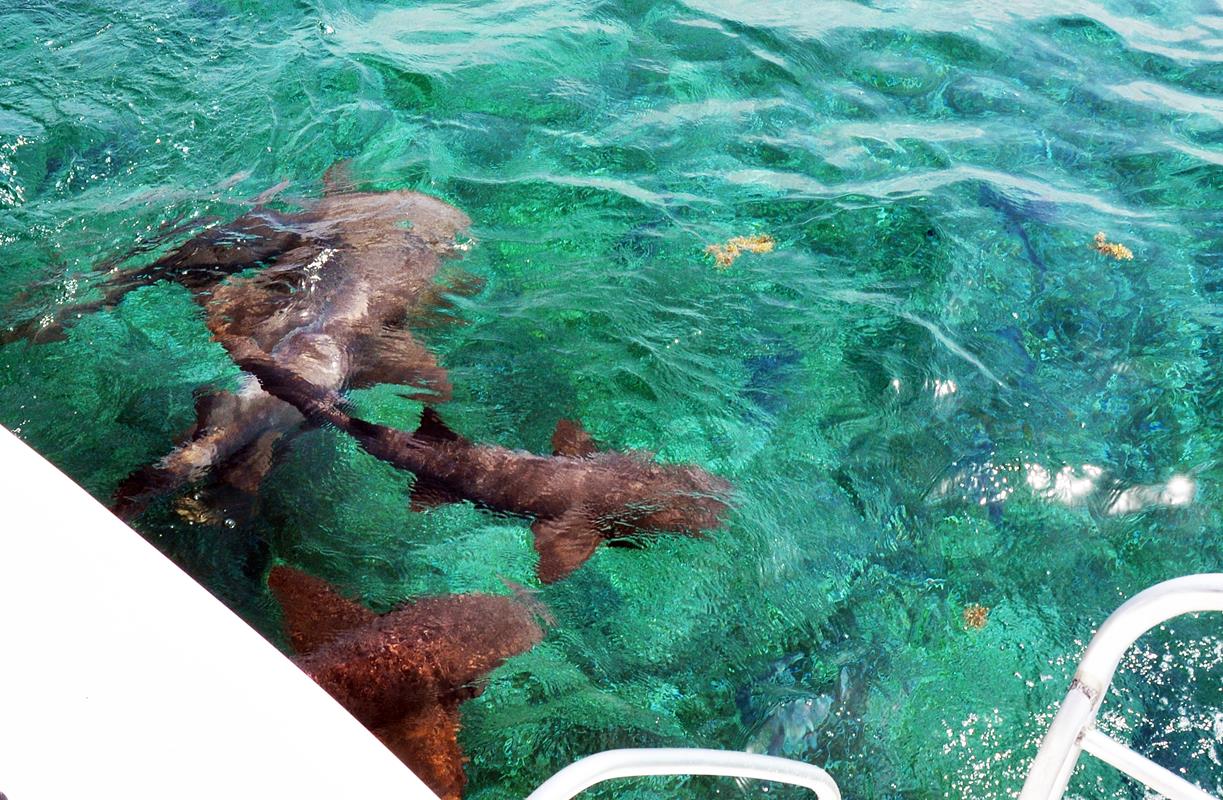
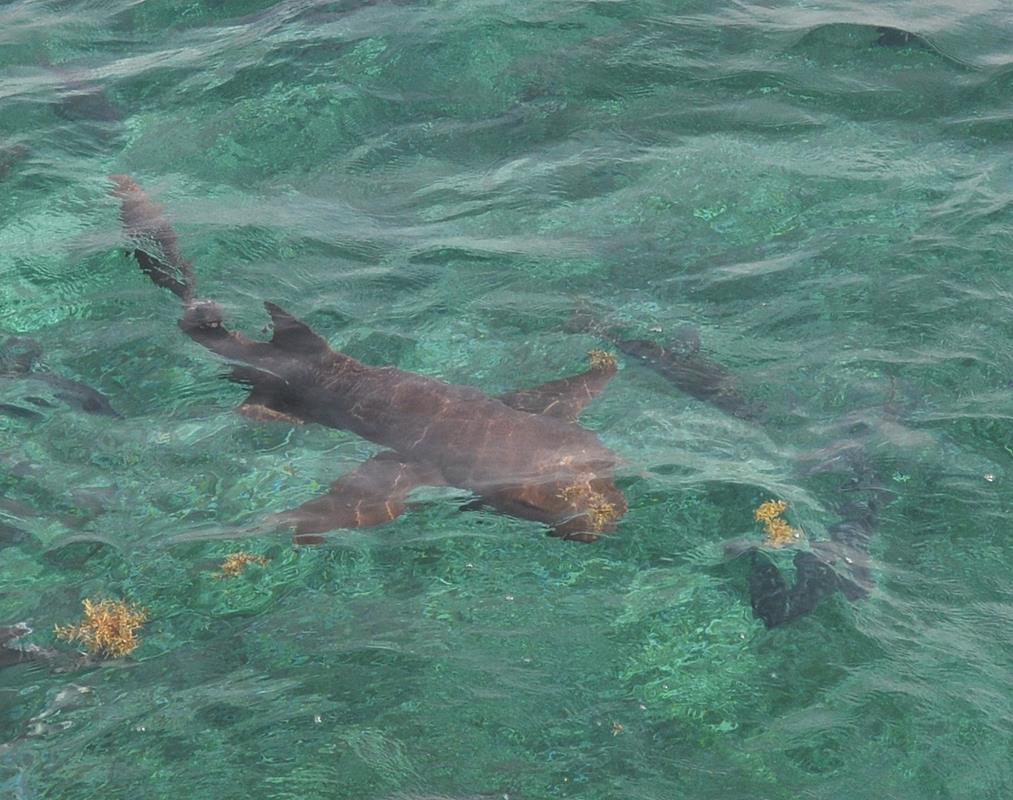
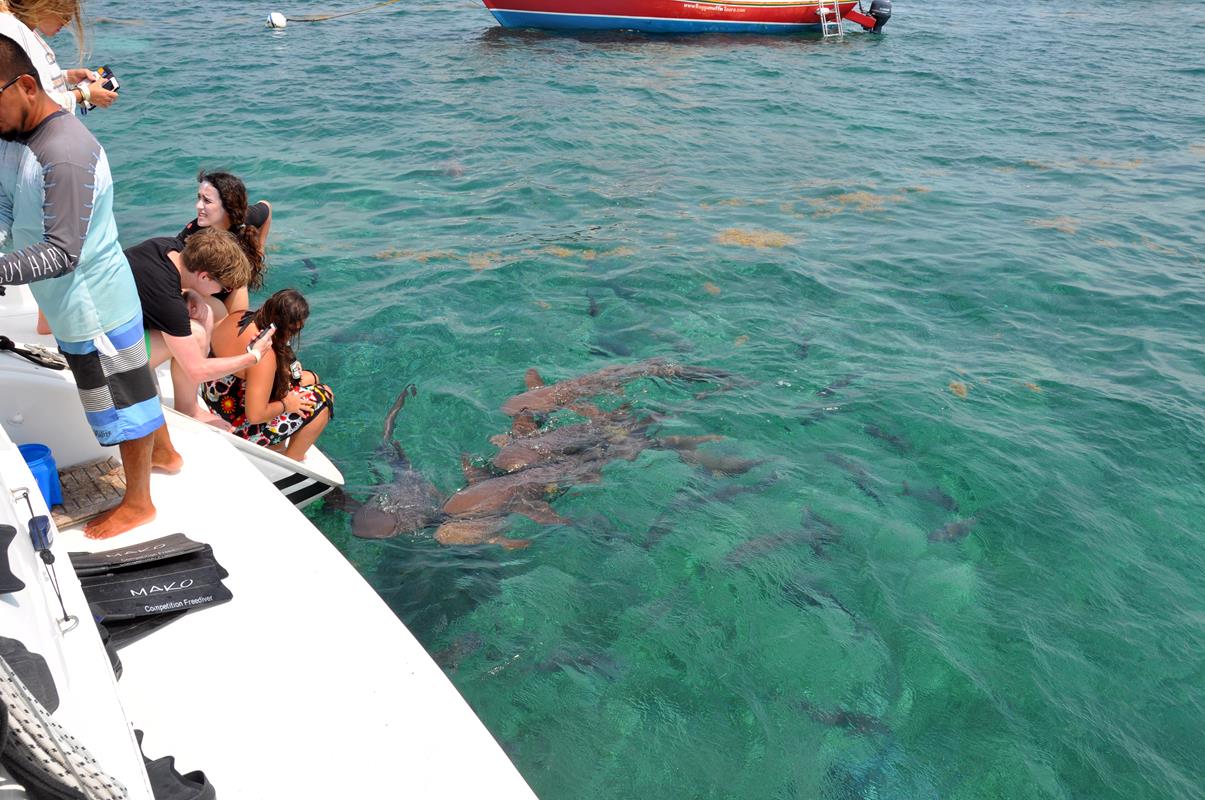

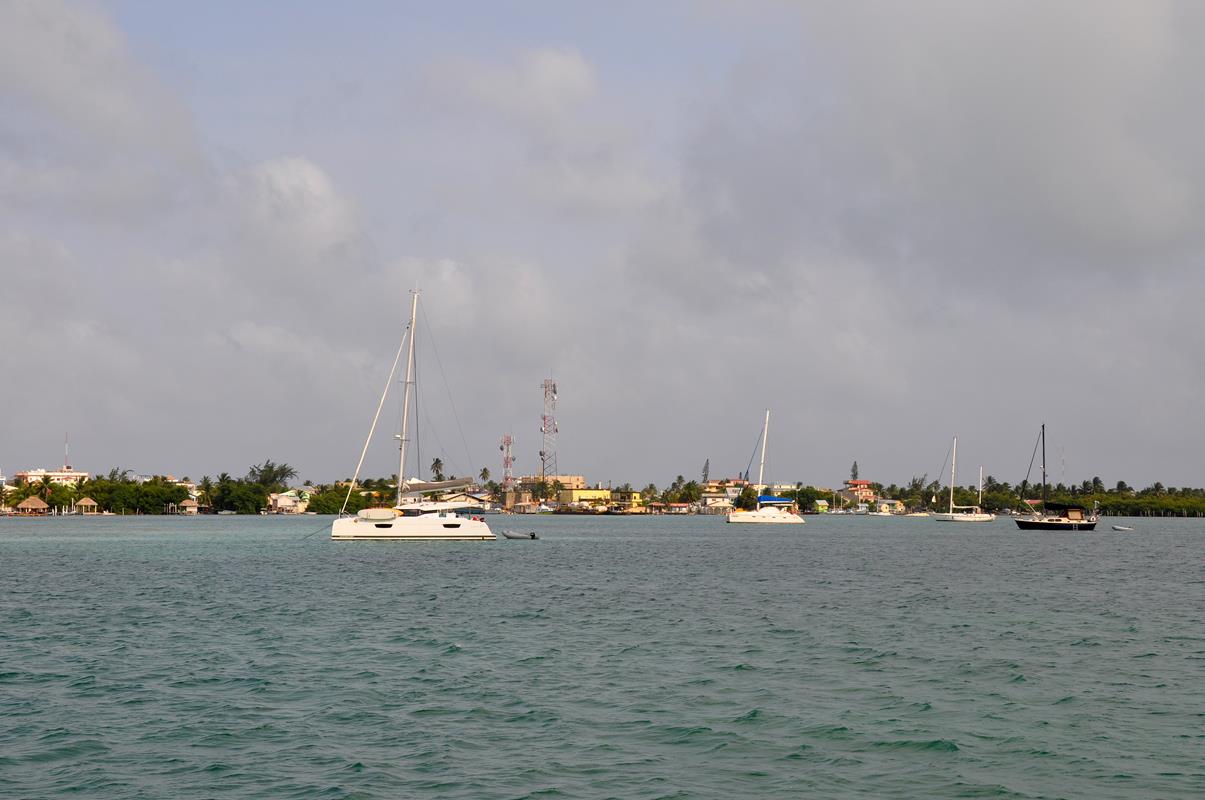
A narrow waterway known as The Split divides the island in two.
Some people state that the Split was created by Hurricane Hattie in 1961 which devastated Belize City.
However, this is largely untrue.
Villagers who actually hand dredged it maintain that it is largely a man-made feature
after Hurricane Hattie opened a passage a few inches deep.
The increased flow of tidal water has naturally dredged the opening to more than 6 metres deep
and now larger boats can easily pass through.
The natural erosion continues to this day and threatens the soft sand banks of the waterway.

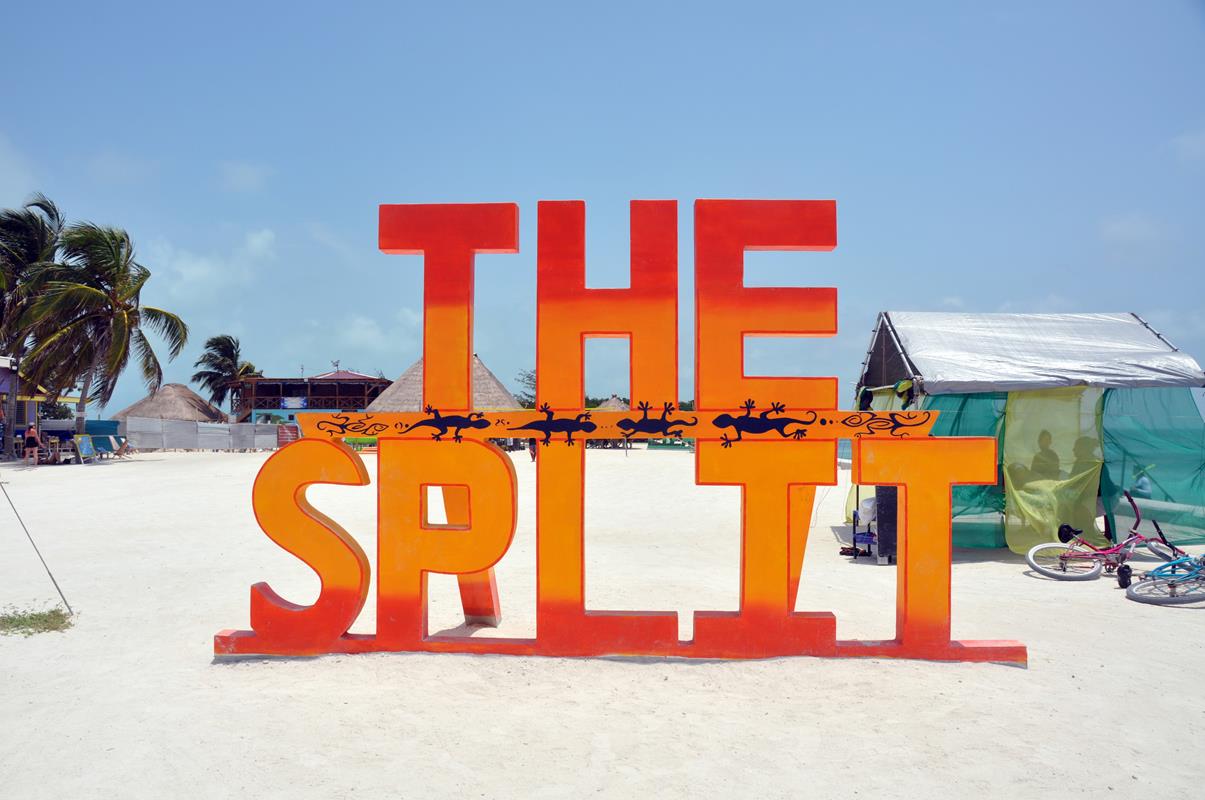

San Ignacio
From Caye Caulker we came back to Belize City on the water-taxi.
We thought that we were then going to travel on a "chicken bus".
However it was a modern air-conditioned coach for the next trip in Belize.
We passed through Belmopan, the capital of Belize, on the way to San Ignacio. A 3-hour trip.
Our hotel was in nearby Santa Elena.
The San Ignacio Resort Hotel runs a conservation program for the Green Iguana,
to create awareness and educate visitors and locals about these endangered creatures.
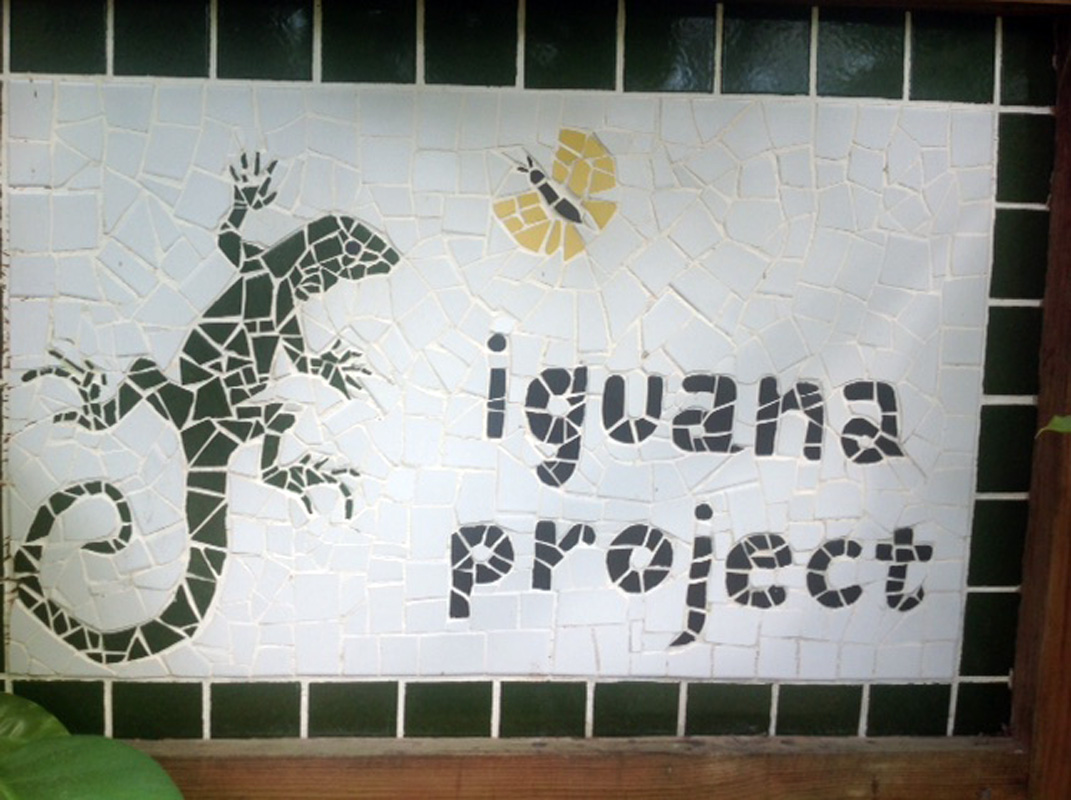
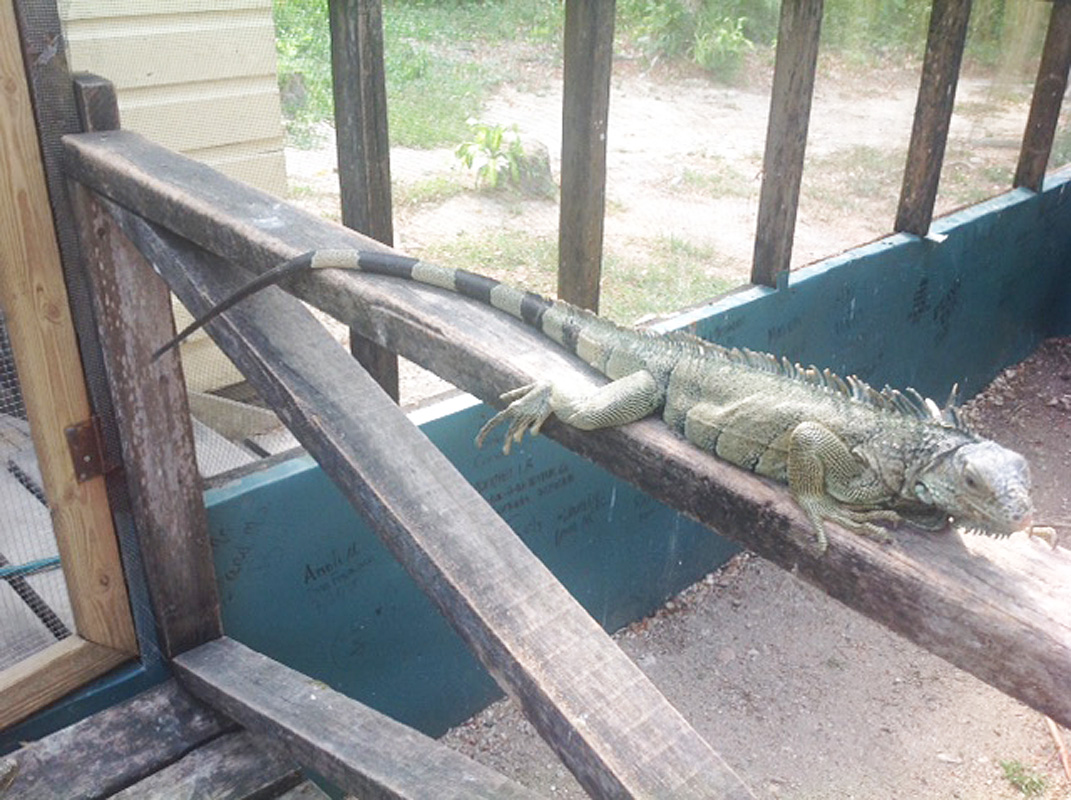
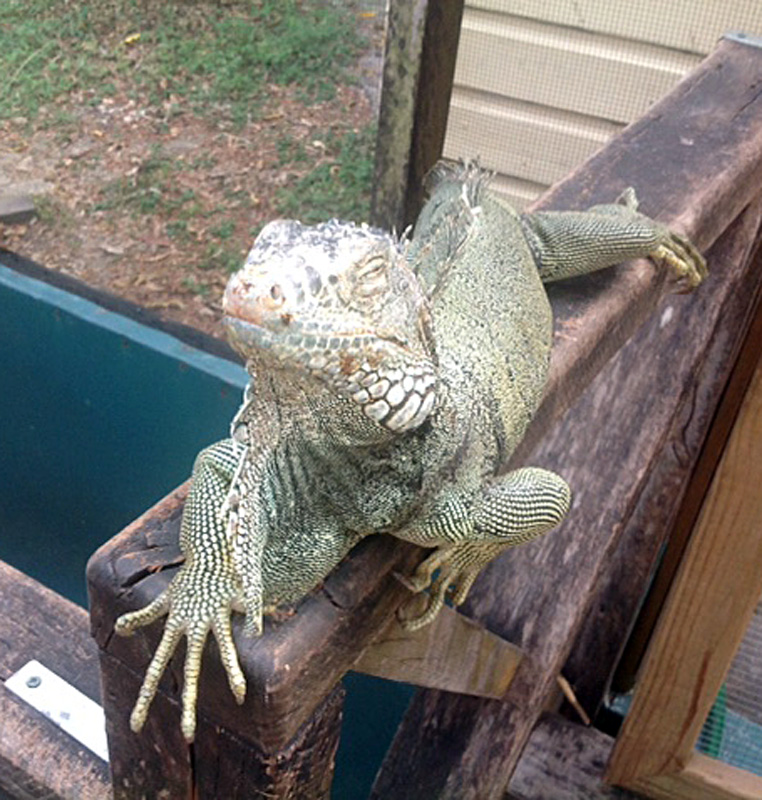
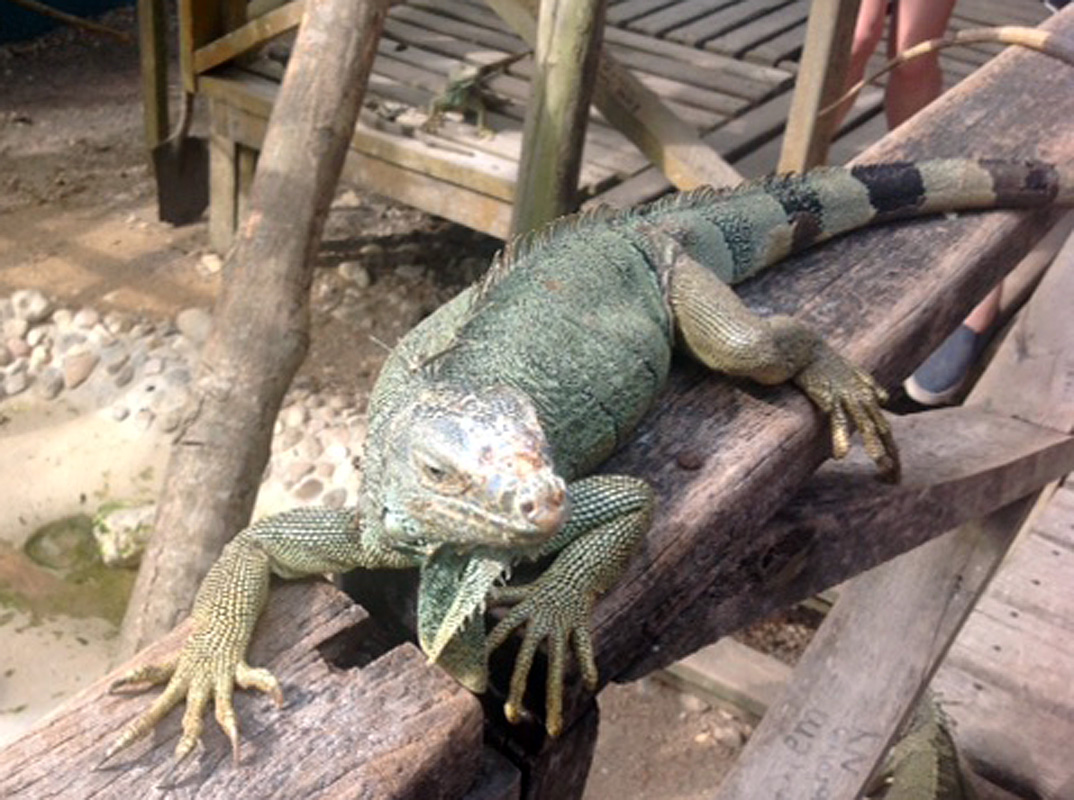
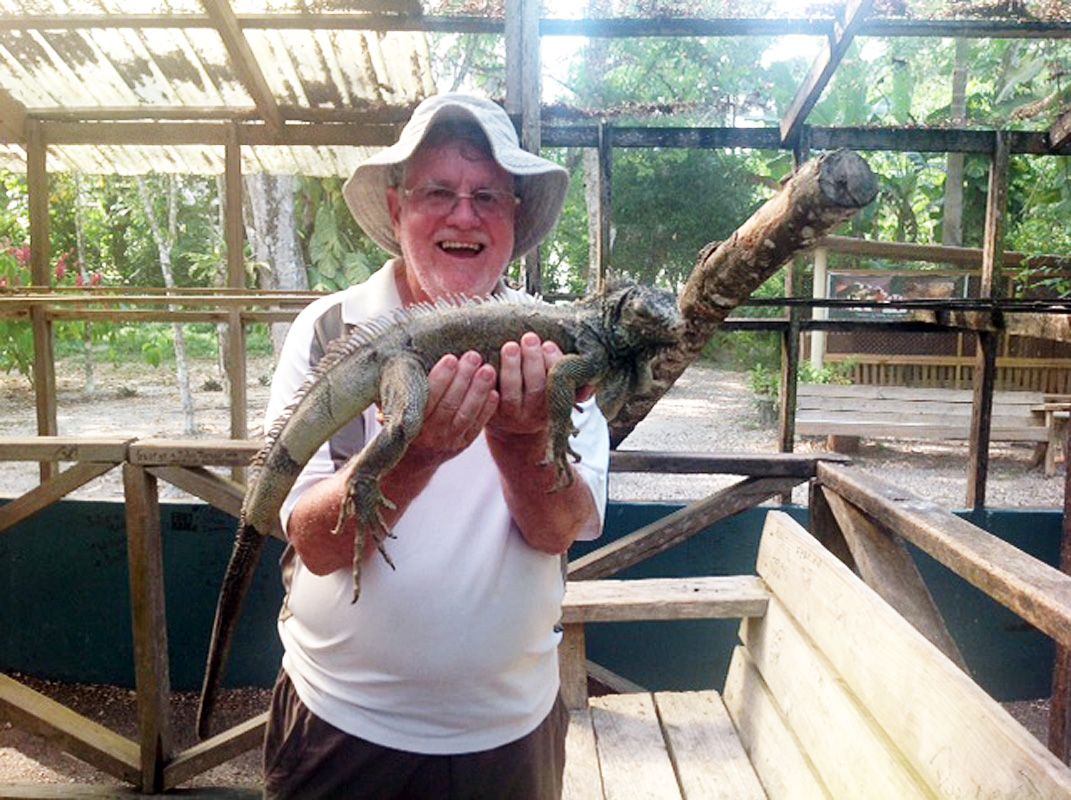
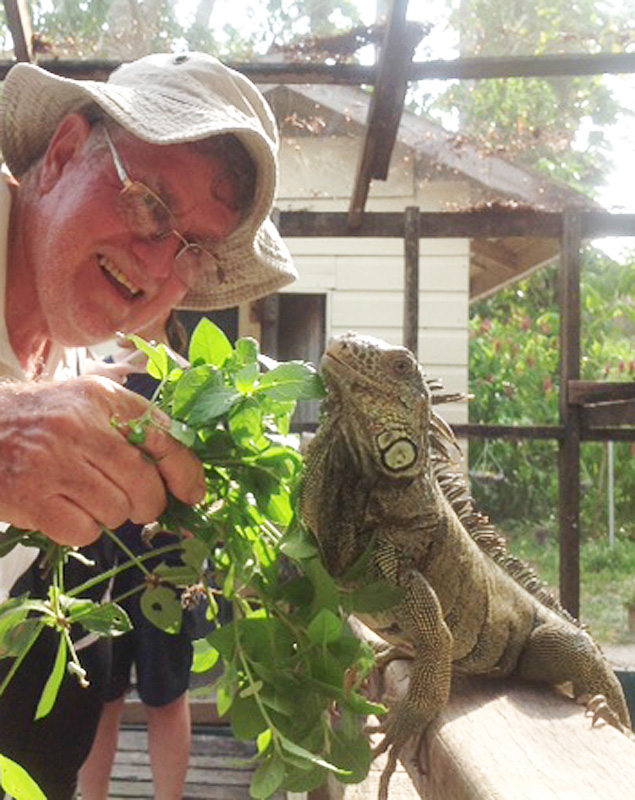
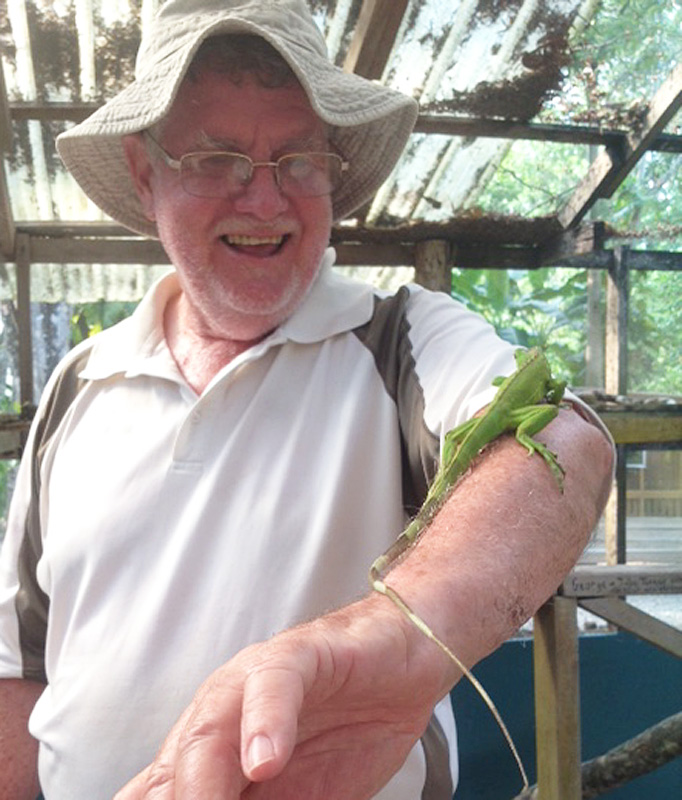
Actun Tunichil Muknal - ATM Cave - The Cave of the Crystal Sepulchre
About an hour from San Ignacio, the 5km long cave is notable as a Maya archaeological site
that includes skeletons, ceramics, and stoneware.
From the parking lot we had a 2km walk to reach the cave entrance.
We had to swim or walk through 3 streams on the way.
We wore helmets and head-lamps as we swam, scrambled, walked and edged through rock crevices along about 1.6km of the cave.
We had to remove our shoes (crocks) and wear socks when we reached the upper dry chambers to help minimise foot traffic.
We were not allowed to take cameras into the cave.
In 2012 a tourist accidently dropped a camera onto a skull and broke it.
These photos were e-mailed to me by one of the local organizers of this day-tour.
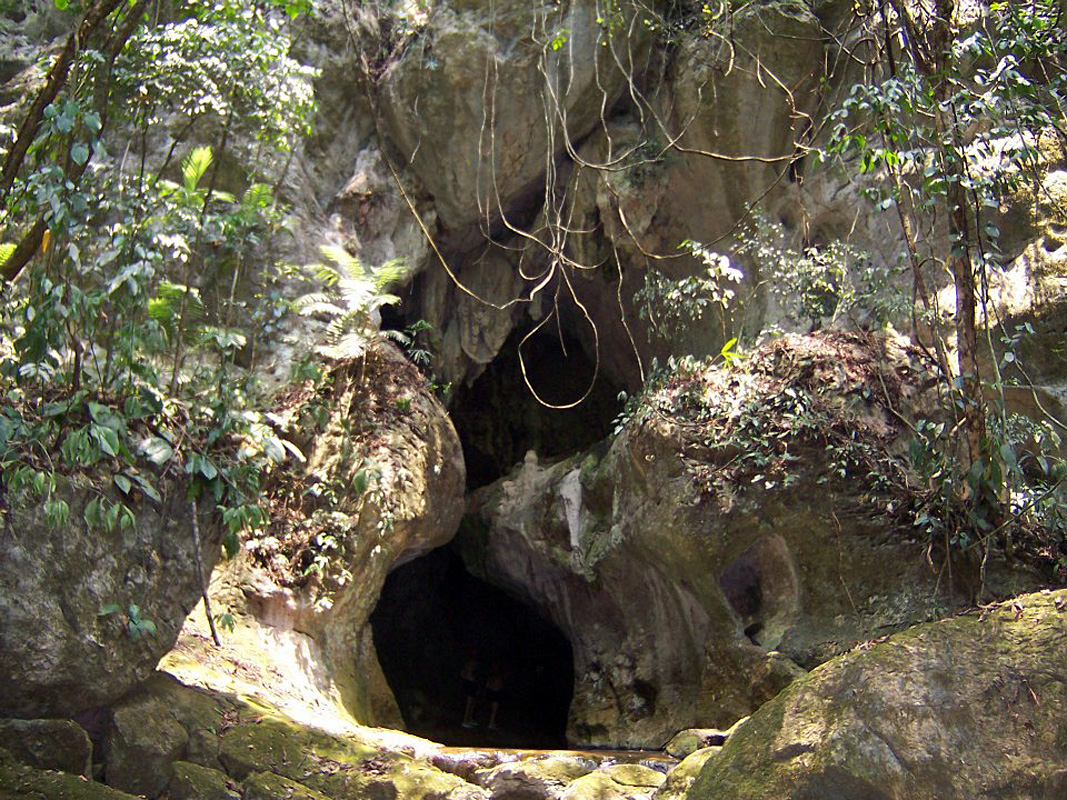
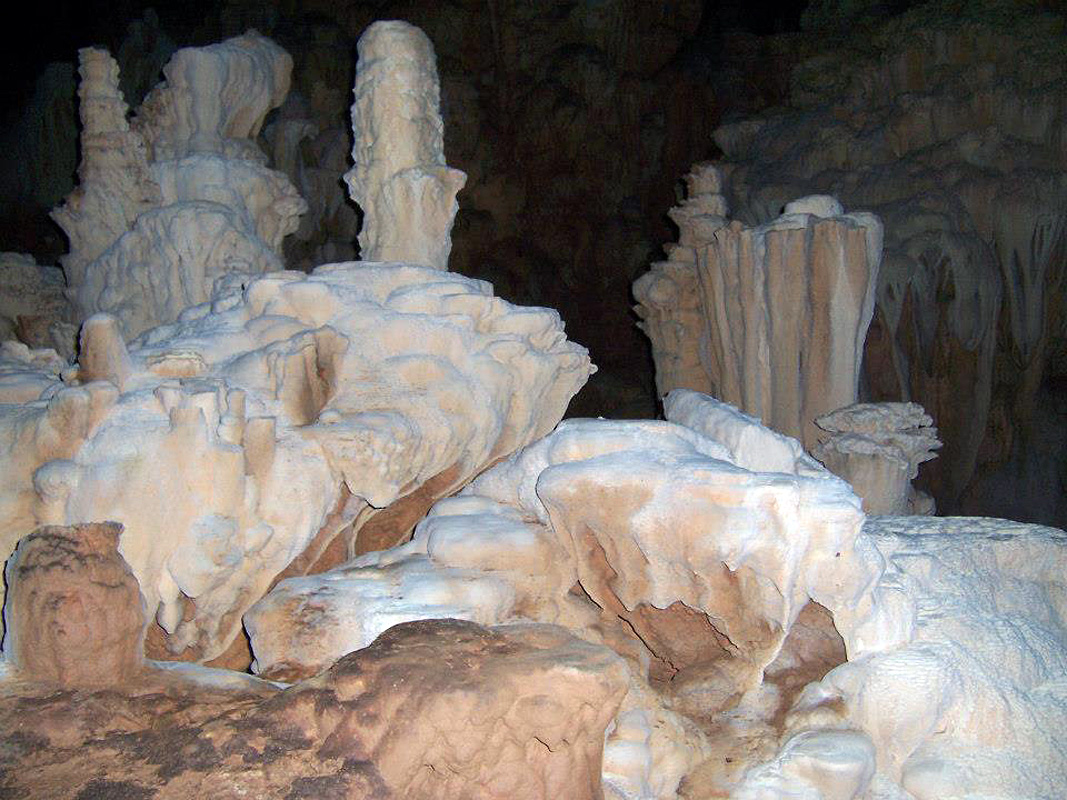


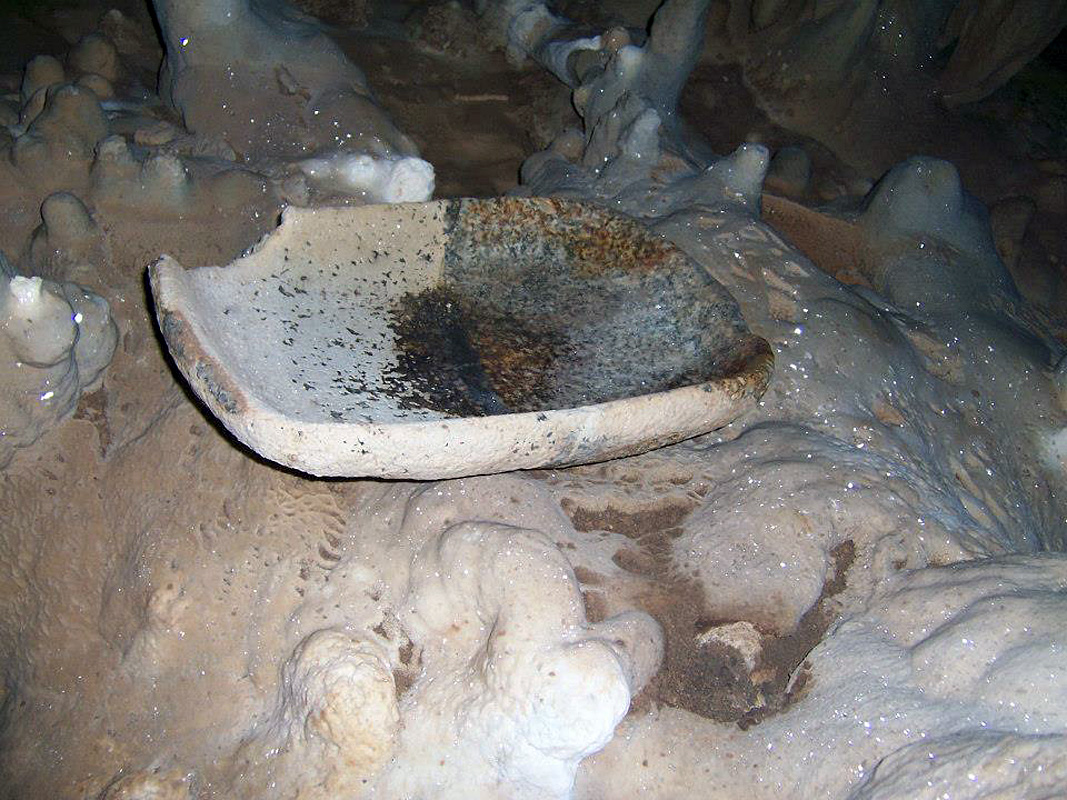
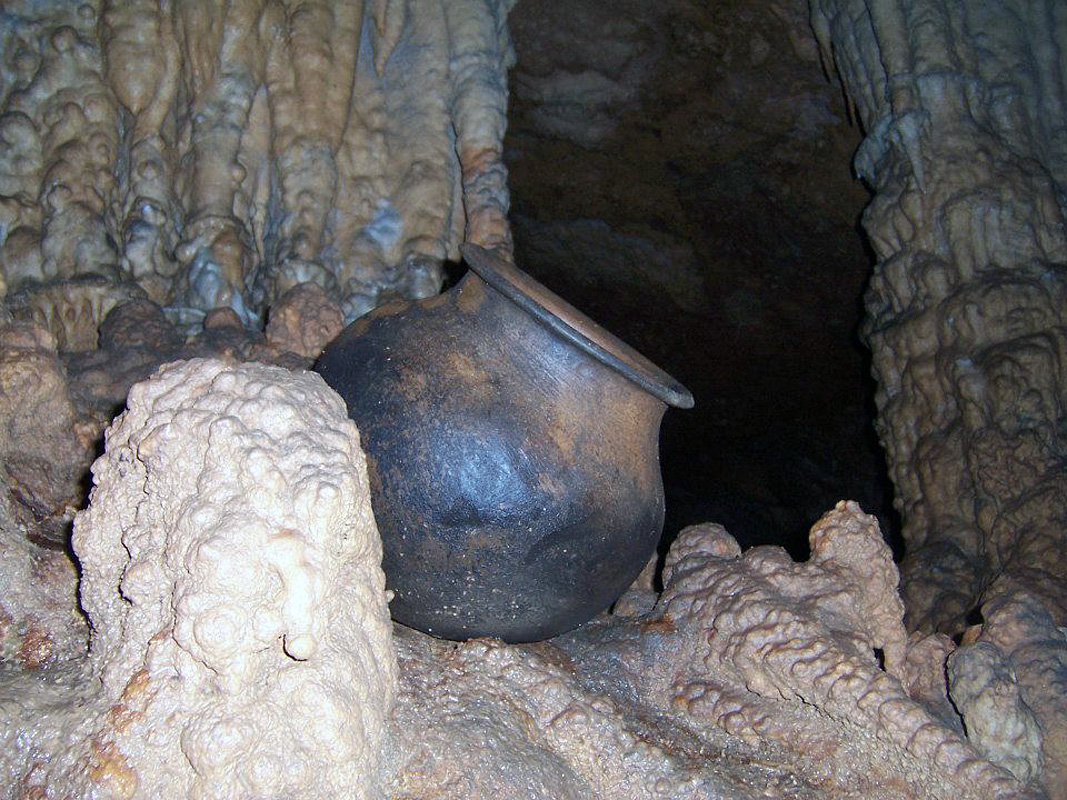
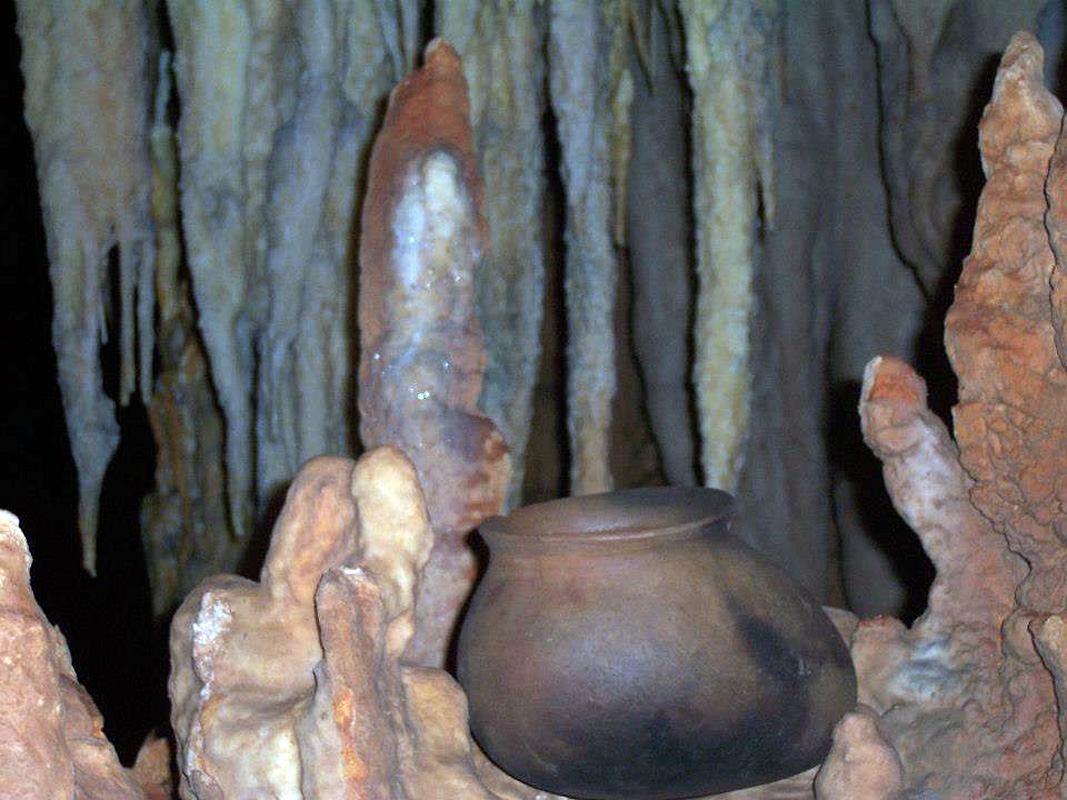
There are several areas with skeletal remains in the main chamber.
The best known is "The Crystal Maiden", the skeleton of an adolescent (an 18-year-old girl),
possibly a sacrifice victim, whose bones have been calcified to a sparkling, crystallized appearance.
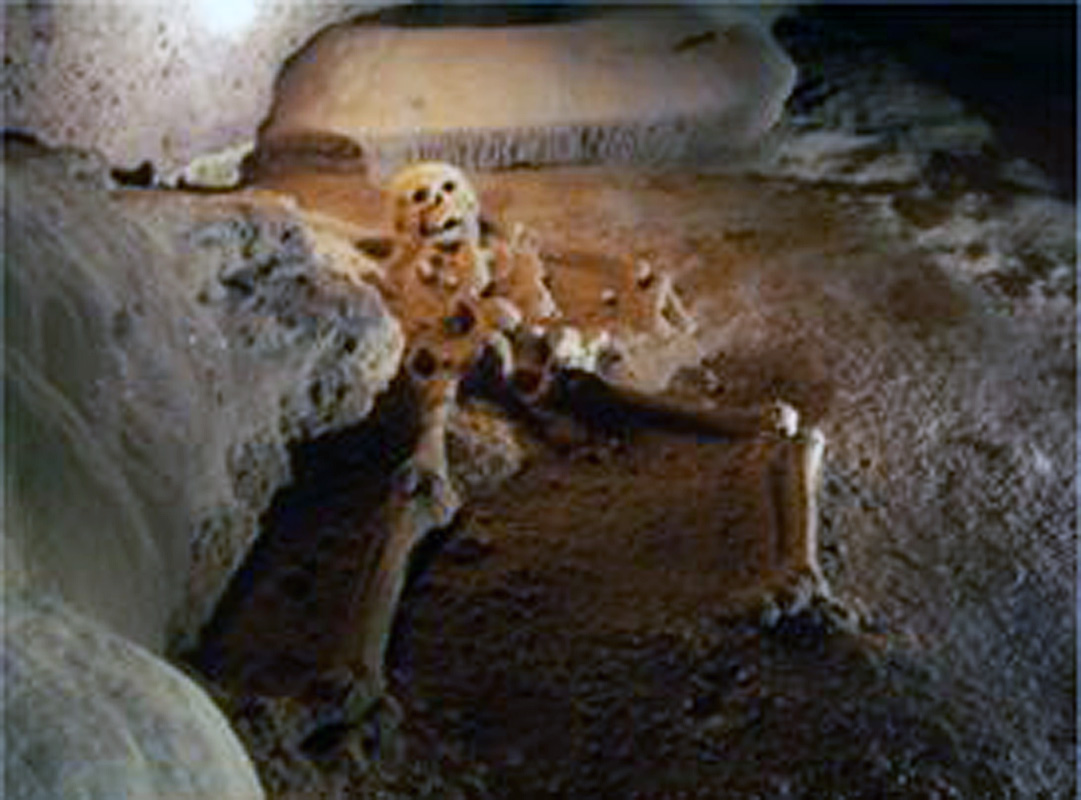
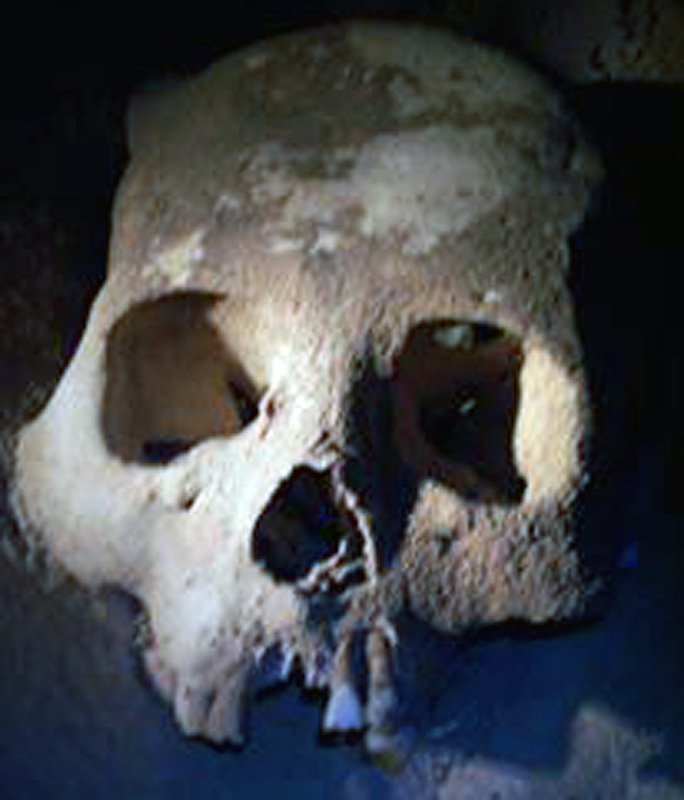

This was great experience in a unique site and definitely one of the highlights of my 42-day Central American trip.
After 6 days in Belize we had about a 1-hour trip from Santa Elana to the Guatemala border.
We stopped at the first town, Melchor, over the border and later that we visited the Tikal ruins.
In April-May 2019 I had a 6-week trip to Central America.
(Melbourne - Los Angeles – Mexico – Cuba – Belize – Guatemala –
Mexico City – Los Angeles - Melbourne)
After my visit to Cuba I joined my third IntrepidTravel trip from Cancun through southern Mexico, Belize and Guatemala.
From Tulum in Mexico we had a 4-hour air-conditioned coach trip to Chetumal, the last town in Mexico before the Belize border.
After a taxi ride from the bus-station to the border, we had a 4-hour ride on this "chicken-bus" to Belize City.
While it was not air-conditioned, the one-time American school-bus was reasonably comfortable and quite large.
A grandmother with a 3-year old girl sat next to me. The girl was fascinated with me ... she kept looking at me and patting my knee.
From Belize City we had about an hours ride on a fast, large water-taxi to Caye Caulker about 35km to the north-east.
Caye Caulker is a small limestone coral island off the coast of Belize in the Caribbean Sea
measuring about 8km (north to south) by less than 0.5km (east to west).
The main industry on the island prior to tourism was fishing.
The island sits in the middle of natural migration routes for fish, and feeding grounds for conch and lobster.
Tourism first started on the island around 1964, with only a few visitors on weekends from the mainland.
In recent years, the island has become a popular destination for backpackers and other tourists.
There are over 50 hotels and a number of restaurants and shops.
Hippies following the so-called "Gringo Trail", of Isla Mujeres, Tulum, Caye Caulker,
Tikal and Lake Atitlan in Guatemala passed through the island.
The country was formerly a British territory called British Honduras
and when it became independent in 1981, it changed its name to Belize.
Spanish was the main language in the other Central American countries, but here it was English.
You could readily shop with US dollars.
We had a day-cruise out to the reef on the catamaran "Gypsy Queen".
We had three 45-minute snorkelling sessions at the reef.
On the first we saw a mother manatee with a calf.
On the second there were a few small schools of fish an some coral.
On the third we swam with some "friendly" sharks that came up to the catamaran as we arrived.
A narrow waterway known as The Split divides the island in two.
Some people state that the Split was created by Hurricane Hattie in 1961 which devastated Belize City.
However, this is largely untrue.
Villagers who actually hand dredged it maintain that it is largely a man-made feature
after Hurricane Hattie opened a passage a few inches deep.
The increased flow of tidal water has naturally dredged the opening to more than 6 metres deep
and now larger boats can easily pass through.
The natural erosion continues to this day and threatens the soft sand banks of the waterway.
San Ignacio
From Caye Caulker we came back to Belize City on the water-taxi.
We thought that we were then going to travel on a "chicken bus".
However it was a modern air-conditioned coach for the next trip in Belize.
We passed through Belmopan, the capital of Belize, on the way to San Ignacio. A 3-hour trip.
Our hotel was in nearby Santa Elena.
The San Ignacio Resort Hotel runs a conservation program for the Green Iguana,
to create awareness and educate visitors and locals about these endangered creatures.
Actun Tunichil Muknal - ATM Cave - The Cave of the Crystal Sepulchre
About an hour from San Ignacio, the 5km long cave is notable as a Maya archaeological site
that includes skeletons, ceramics, and stoneware.
From the parking lot we had a 2km walk to reach the cave entrance.
We had to swim or walk through 3 streams on the way.
We wore helmets and head-lamps as we swam, scrambled, walked and edged through rock crevices along about 1.6km of the cave.
We had to remove our shoes (crocks) and wear socks when we reached the upper dry chambers to help minimise foot traffic.
We were not allowed to take cameras into the cave.
In 2012 a tourist accidently dropped a camera onto a skull and broke it.
These photos were e-mailed to me by one of the local organizers of this day-tour.







There are several areas with skeletal remains in the main chamber.
The best known is "The Crystal Maiden", the skeleton of an adolescent (an 18-year-old girl),
possibly a sacrifice victim, whose bones have been calcified to a sparkling, crystallized appearance.



This was great experience in a unique site and definitely one of the highlights of my 42-day Central American trip.
After 6 days in Belize we had about a 1-hour trip from Santa Elana to the Guatemala border.
We stopped at the first town, Melchor, over the border and later that we visited the Tikal ruins.